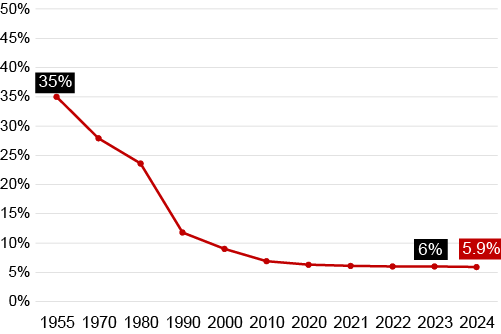To understand our position on unions, it is helpful to understand not only what a union is, but what a union is not. A union is not a club or a social organization.
A union is a business.
U.S. AutoForce is an attractive target for unions because of our large workforce and growth throughout the country. The more members that unions have, the more membership fees and dues they can collect. They have a vested interest in signing you up to be a member.
Union Membership
(Private Sector)

Source: Department Of Labor
Unions CAN
Unions CANNOT